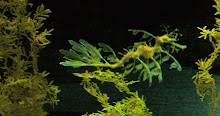An international team of scientists has sequenced the genome of the first oil-slick digesting germ, raising hopes that the microbe's secrets can be used to help clean-up oil spills. The germ: a bacterium called Alcanivorax borkumensis: was only discovered in 1998, but is almost certainly the most important microbe for breaking up oil-slicks. A. borkumensis is found in oceans worldwide, but exists only at very low levels in unpolluted water. Once oil is released into the ocean, however, it multiplies rapidly and soon becomes the most common organism around an oil-slick. This remarkable efficiency has always puzzled scientists, so it was selected as the first bacterium of its kind to have its complete DNA sequence read.
The research, by Susanne Schnieker of the University of Bielefield, Germany and her colleagues, revealed that the bug harbours an abundance of genes for digesting the various hydrocarbon compounds found in crude oil. The scientists also found the germ had genes for biosurfactants: natural detergents that break oil up into smaller droplets and therefore speed its degradation. They also found genes allowing A. borkumensis to scavenge micro-nutrients, such as iron, cobalt and magnesium, from the sea water. A lack of micronutrients is often the limiting factor that restricts bacterial growth around an oil slick, so A. borkumensis's exceptional nutrient scavenging ability goes some way towards explaining its unusual success. The researchers believe that several of the organism's genes that they have uncovered could be used by man for various biotechnological applications, including cleaning up oil-slicks and separating chemical mixtures.
Schneiker and colleagues' research was published in volume 24 (issue 8) of the journal Nature Biotechnology.
Saturday, 26 August 2006
Oily Bacteria- Science News
Labels:
Alcanivorax,
bateria,
biotechnology,
borkumensis,
clean-up,
DNA,
oil,
Oil-slick,
Schneiker
Subscribe to:
Post Comments (Atom)









No comments:
Post a Comment